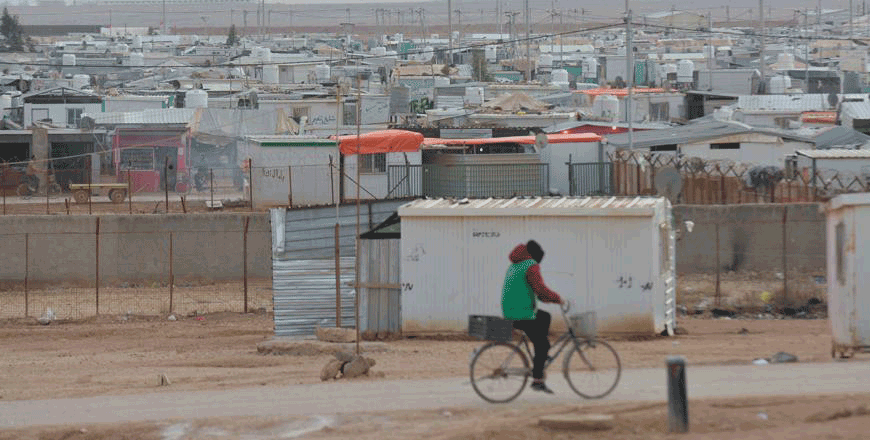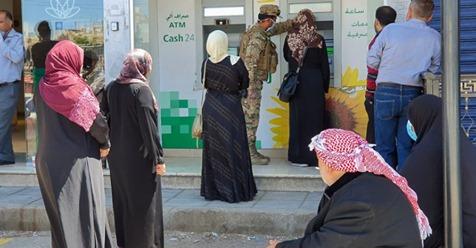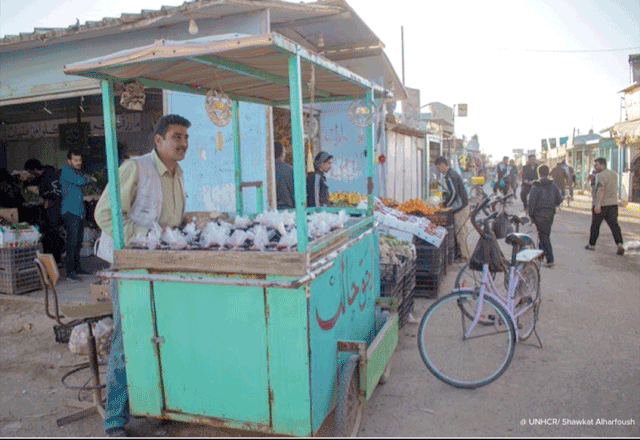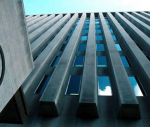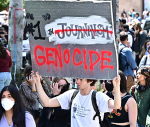You are here
64% of refugees survive on less than JD3 a day in Jordan— UNHCR-WB assessment
By Batool Ghaith - Mar 30,2022 - Last updated at Mar 30,2022
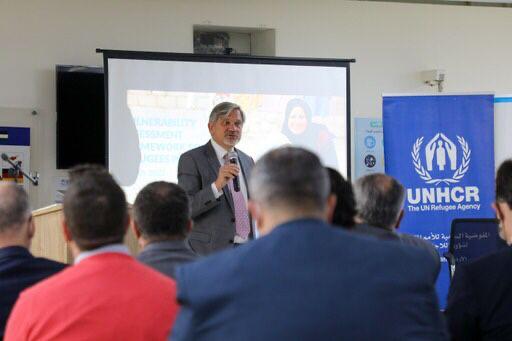
UNHCR Representative in Jordan Dominik Bartsch speaks during the launch of the results of a joint vulnerability assessment of refugees in Jordan by UNHCR and the World Bank on Wednesday (Photo courtesy of UNHCR)
AMMAN — Sixty-four per cent of refugees in Jordan survive on less than JD3 a day, according to a joint vulnerability assessment of refugees in Jordan by UNHCR and the World Bank (WB).
UNHCR Jordan and the World Bank MENA Poverty team collaborated to determine for the first-time monetary poverty among refugees in Jordan, using the international poverty line of $5.5, equivalent to about JD3 per day, according to a UNHCR statement.
New data released by the UNHCR and the World Bank on Wednesday shows that the living conditions of refugees are improving, with most families generating their own income.
Despite this, most refugees remain on the brink of falling into poverty, as 90 per cent of refugee families say they employ at least one negative coping strategy, such as reducing food intake or buying household goods on credit, to get through their day.
The data show that without assistance, three quarters of refugees would be poor, but with assistance, the percentage drops to 64 per cent.
The survey states that 88 per cent of Syrian refugees and 50 per cent of non-Syrians receive assistance from UNHCR or the WFP. Fifty-two per cent of refugee families in camps rely on WFP food assistance as their main source of income.
Forty per cent of refugee families rely on cash assistance to pay rent, and half of refugees do not have written rental agreements, as 19 per cent of refugees received threats of eviction last year, the data showed.
Forty-six per cent of refugee families have poor or leaking roofs, and 65 per cent of them do not have beds, according to the survey.
Fifty-six per cent of refugee families have a person with a chronic illness, the survey stated, noting that chronic illnesses affect daily life and have economic effects.
For the first time, the assessment has examined the situation of refugees living in refugee camps. In comparison to the out of camp population, evidence shows that camp residents fare better in areas such as health and education.
However, due to a lack of employment opportunities, they are more reliant on humanitarian aid, as 52 per cent of out-of-camp families report having access to income from work, compared to 25 per cent in refugee camps.
In both camp and out-of-camp settings, the findings highlight that having one family member employed is not enough to meet monthly household needs. As a result, the number of Syrian refugee families holding debt increased by 39 per cent in comparison to 2018.
Holly Benner, Resident Representative for the World Bank in Jordan, indicated that the data in the Vulnerable Assessment Framework (VAF) can be a powerful tool for evidence-based decision making to inform Jordan’s refugee response.
“Continued joint humanitarian-development analyses will utilise the new data to explore how to enhance the targeting efficiency of assistance, and thus its effectiveness,” Benner said during the launch of the survey in Amman on Wednesday.
Eighty per cent of refugee children have attended school over the last year – despite the challenges of remote education – while child labour remains minimal, according to the VAF.
In the field of health, more needs to be done to ensure that the most vulnerable families are receiving the support they need. In comparison to 2018, there has been a 13 per cent increase in Syrian refugees who require medical care but were unable to access it.
“We stand at a crossroad of the refugee response in Jordan,” UNHCR Representative in Jordan Dominik Bartsch said.
“The improving situation for refugees reflects the impact of our collective efforts over the past years, yet this can easily be reversed. Refugees remain vulnerable, and more needs to be done to support their self-reliance,” Bartsch said during the event.
Bartsch also noted that the Ukraine-Russia crisis will have an effect on funding; however, Jordan’s relations with the international community will help with the sustainability of assistance, which is highly important.
According to the UNHCR, the 2022 VAF is a comprehensive and rich analysis of the refugee population in Jordan. Surveying over 10,000 refugee families, the analysis usually takes place every two years, but the recent assessment was delayed due to the pandemic.
The results are designed to monitor changes in refugee vulnerability over time, inform the delivery of humanitarian assistance, and support programmes aiming to strengthen the self-reliance of refugees.
Related Articles
AMMAN — The food poverty line, a common state for camp and out-of-camp refugees in Jordan, is estimated at JD17 per capita per day.
AMMAN — Starting this week, approximately 18,000 vulnerable refugee families will receive one-off emergency cash assistance from the UNHCR,
AMMAN — The Jordan funding update issued by UNHCR, the UN Refugee Agency, shows that it has only obtained 15 per cent of its $390.1 million


